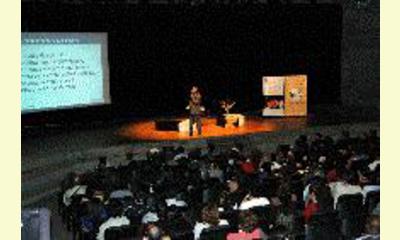|
|
Restorative Justice - Justice as a Value in Brazil
un articulo por Suzana Camargo - Edition: Mônica Nunes, Planeta Sustentável
Already used in countries like Canada, New Zealand and South African, the model of restorative justice proposes a dialogue betwen the victim and the defendant for the collective solution to a conflict. The forum of the Committee on Culture of Peace - held in São Paulo with the presence of judge Egberto Penido - discussed the use of this model in Brazil where there have been good results in schools in poor regions of the city of São Paulo.

from the website of Palas Athena
For example, three boys were frustrated when their school newspaper was canceled. Angry with the decision, they decided to call the attention of the school's principal in a dramatic way. During a classes they threw firecrackers and ended up injuring other students.The prank in bad taste would have ended with the expulsion of the students responsible, it the method of Restorative Justice had not been used to resolve the problem. Gathered in a circle, the representatives of management, educators, parents of those involved, victims and defendants held a dialogue.The mediator, a judge, listened to all sides. The boys were able to expose their dissatisfaction with the decision that led them to commit the reckless act and the victims were able to see and understand the situation. The boys had to be punished, of course, and they had to participate in the work of a fire station in the community. And the newspaper, an important means of communication between students and school, was allowed to resume publication.
The above case occurred in a public school located in the neighborhood of Paraisópolis, a slum in the southern part of São Paulo. This effort at reconciliation was made thanks to the pioneering work in Brazil to deploy the use of Restorative Justice. It was in 2005, during the First Brazilian Symposium on Restorative Justice that the methodology became official in the country. A leading advocate of the practice here is Egberto Penido, a district judge in the Special Court for Children and Youth of São Paulo and coordinator of the Center for Restorative Justice Studies of the Paulista School of Magistrates. "The difference in results is dramatic between the two ways of solving a problem: punishment like paddling a child, on the one hand; and employing a circle of restorative justice, on the other," said Penido. The judge was the keynote speaker on the night of Tuesday, September 11, in the 99th Forum of the Committee on Culture of Peace, a partnership between UNESCO and the organization Palas Athena . The meeting's theme was Restorative Justice - Justice as a Value in Brazil.
To Penido, that which has been practiced in the past centuries is the justice of punishment, which simply imputes guilt to the defendant without trying to turn it around, let alone try to actually solve the conflict. The struggle for a just society can not be conducted by unfair means. "Putting the blame on the other is one of the strongest mechanisms of violence," he says. "Unfortunately we have not learned to deal with violence without being violent." That is a hard habit to change, but the issues will only be resolved when there is actually a solution satisfactory to all.
(This article is continued in the discussionboard)
( Click here for the original Portuguese version.)
|








|
DISCUSSION
Pregunta(s) relacionada(s) al artículo :
Restorative justice, What does it look like in practice?
* * * * *
Comentario más reciente:
:
On this theme, I encourage CPNN readers to read Restorative Justice for Children in Brazil.

|
|









